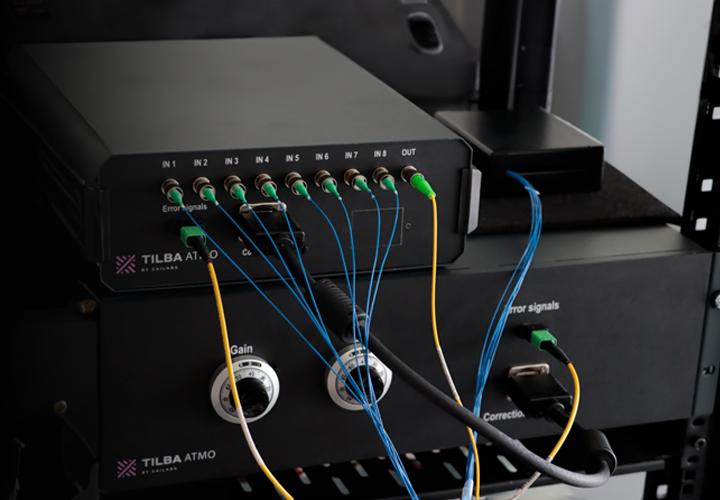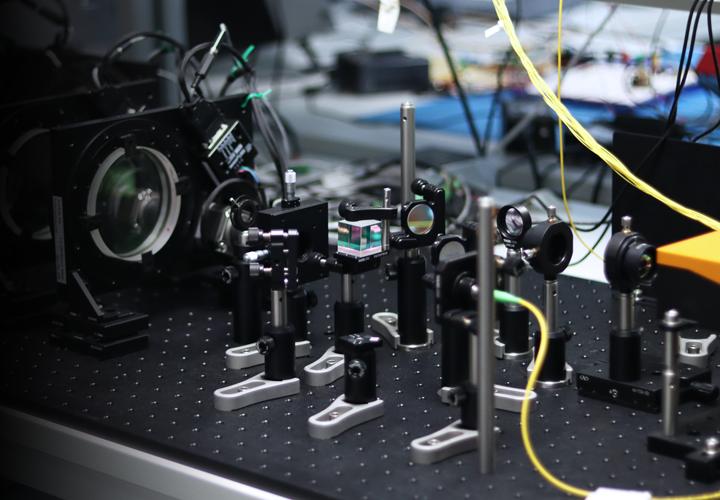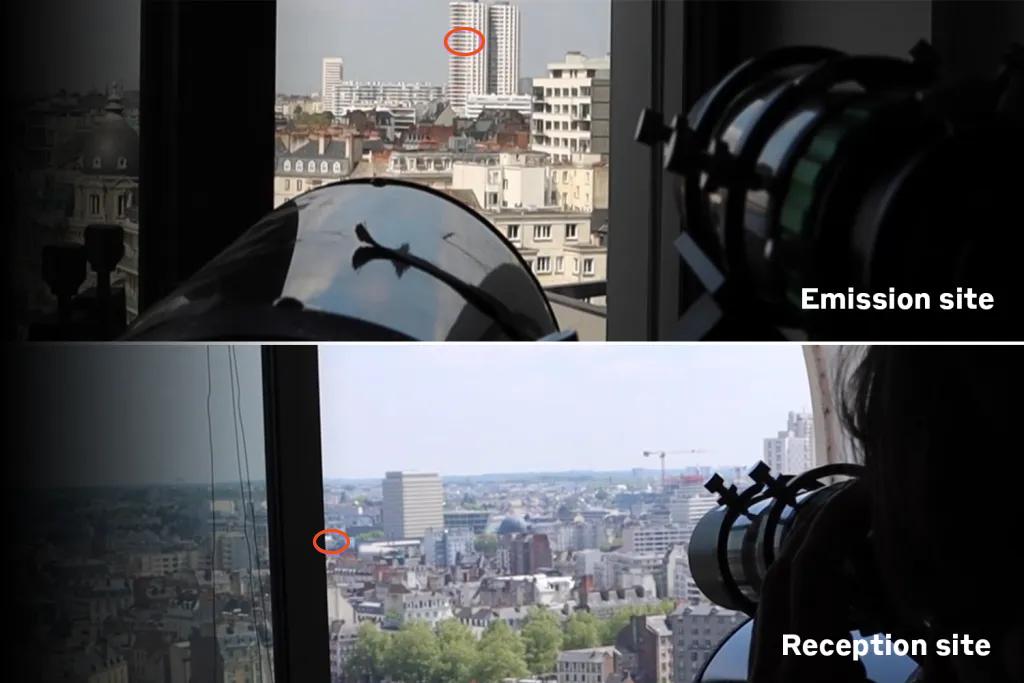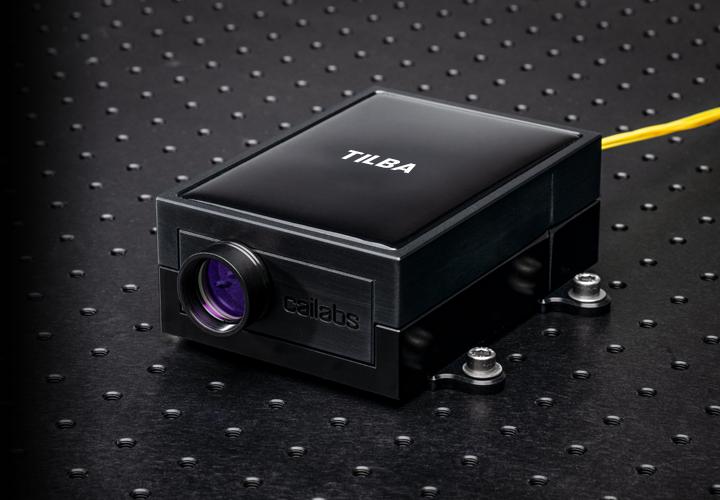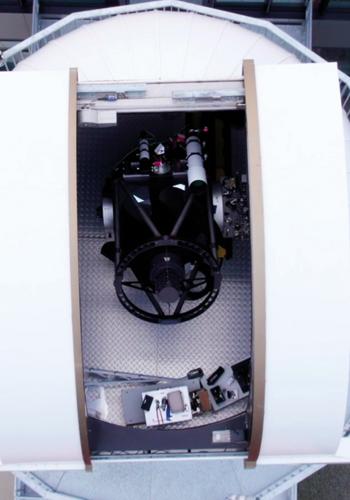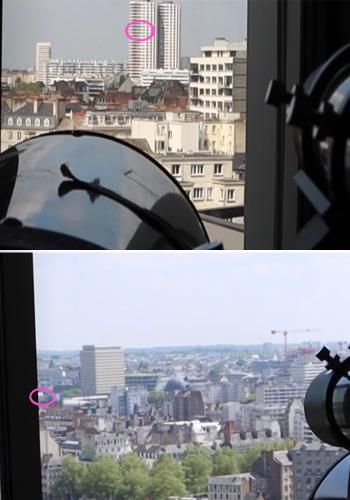Technology Building Blocks
Cailabs’ TILBA® technology building blocks improve land, sea, air and space optical links propagating through the atmosphere by increasing laser transmission power and managing atmospheric turbulence.

TILBA®-ATMO
TILBA®-ATMO is a compact optical receiver designed to improve the reliability of high-throughput free-space optical links by mitigating atmospheric turbulence. Leveraging Cailabs’ Multi-Plane Light Conversion (MPLC) technology, TILBA®-ATMO couples a multimode signal into a single-mode fiber, the standard medium for optical communications.
The laser beam wavefront is disturbed as it passes through the atmosphere, making it difficult to collect and couple into a detector. TILBA®-ATMO solves this problem by decomposing the collected beam into a limited number of spatial modes using the MPLC spatial demultiplexer, and then coherently recombining them on an integrated photonic chip into a single-mode fiber, restoring a reliable output signal.
TILBA®-ATMO functions in a similar way to adaptive optics, but in a mechanically passive component, making turbulence mitigation more accessible, affordable and robust than with traditional approaches.
TILBA®-ATMO is integrated into TILBA®-OGS optical ground stations to receive satellite data.
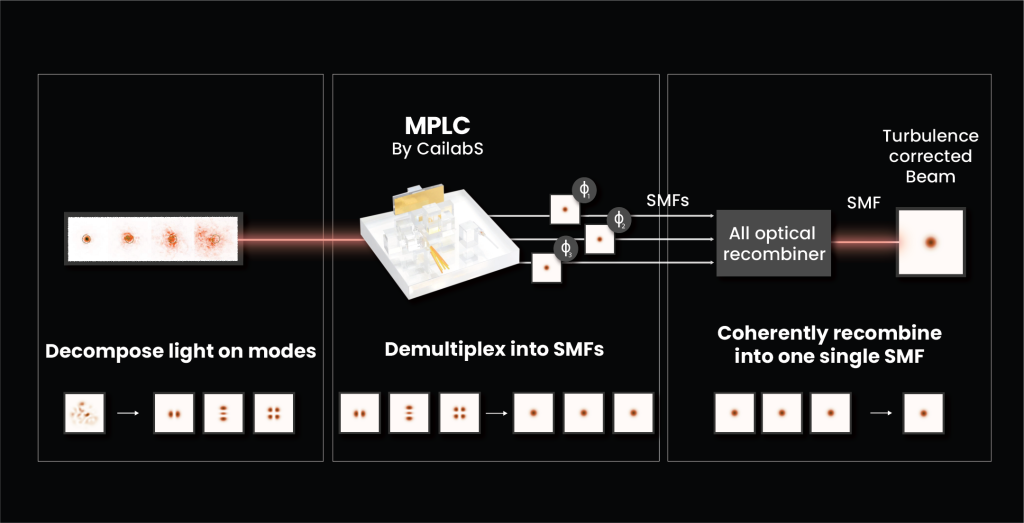
Two-minute guide to TILBA®-ATMO
TILBA®-IBC
TILBA®-IBC enhances free-space optical links by increasing transmission range and resistance to atmospheric turbulence through incoherent combining. The technology facilitates reliable, high-throughput optical communications through the atmospheric layers, supporting links to space and point-to-point connections over land, sea and air.
Spatial diversity minimizes signal disruption by simultaneously transmitting multiple independent incoherent signals. This means that the transmitted link is more resistant to turbulence because it is propagated through multiple uncorrelated channels. The spatial diversity technique used in TILBA®-IBC involves the incoherent combining of spatial modes, like a simplified version of using multiple transmitters. With TILBA®-IBC, spatial modes are generated using MPLC technology and are transmitted individually, ensuring that each one operates independently.
TILBA®-IBC is integrated into TILBA®-OGS optical ground stations to transmit satellite data, and into TILBA®-LOS terminals to enhance point-to-point links in highly turbulent atmospheric conditions, such as optical links using direct-detection modulation formats.
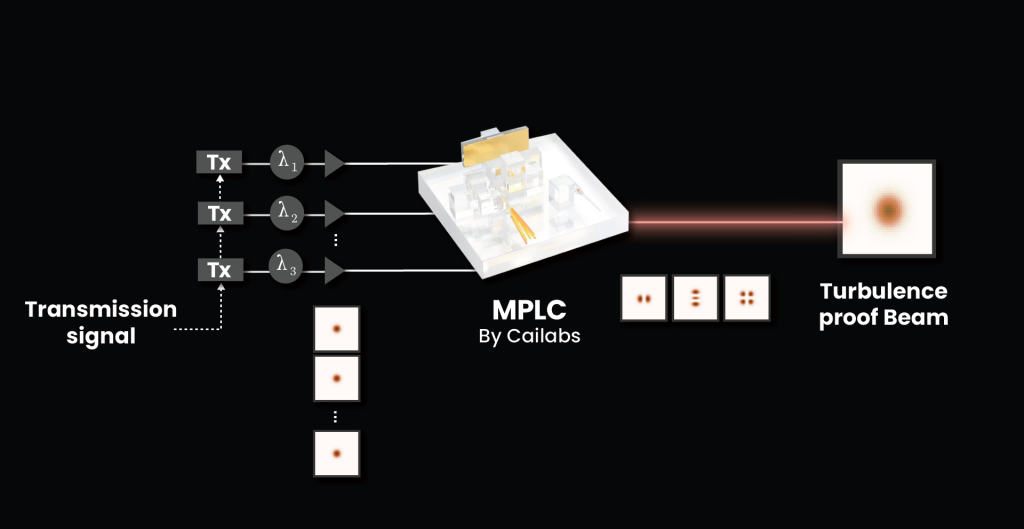
TILBA®-CBC
TILBA®-CBC enables the coherent combination of multiple optical sources to boost the range and throughput of laser communication links. The technology is particularly useful for ultra-high-throughput ground-to-satellite optical feeder links.
The coherent combination of multiple laser sources significantly increases the overall signal transmission power, overcoming the current limitations of telecom sources, which are capped at around 50 W. By optimally combining six low-power input beams using MPLC, TILBA®-CBC generates a high-quality telecom laser beam with an efficiency of over 80% and an output power up to 100 W class.
This technology building block enables Cailabs to offer custom and scalable coherent combining solutions that satisfy the high output power, specific modulation and throughput requirements of optical links.
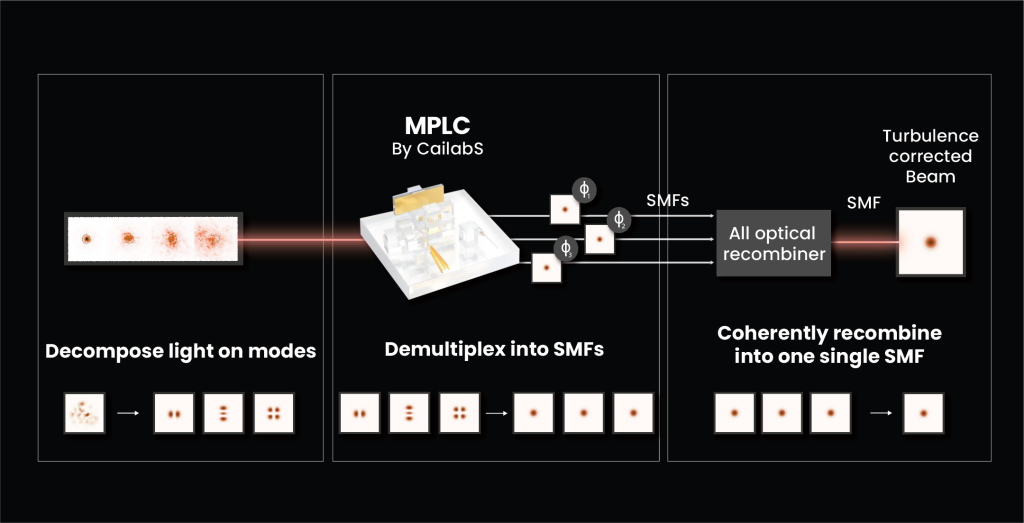
Ressources
Are you planning to expand your network of OGS or robust optical terminals?
Contact us

